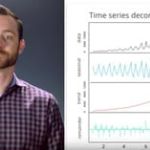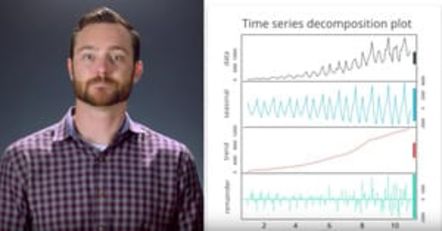
Time Series Forecasting
Summary
The Time Series Forecasting course provides students with the foundational knowledge to build and apply time series forecasting models in a variety of business contexts. You will learn:
- The key components of time series data and forecasting models
- How to use ETS (Error, Trend, Seasonality) models to make forecasts
- How to use ARIMA (Autoregressive, Integrated, Moving Average) models to make forecasts
Throughout this course you’ll also learn the techniques to apply your knowledge in a data analytics program called Alteryx.
This course is part of the Business Analyst Nanodegree Program.
Expected Learning
Predictive analytics has proved to be a powerful tool to help businesses analyze data and predict future outcomes and trends. Making forecasts using advanced analytics is crucial in today’s data-driven economy.
In this course, you’ll learn how to use advanced forecasting models to predict the future. You'll learn this through improving your fluency in Alteryx, a data analytics tool that enables you prepare, blend, and analyze data quickly.
This course is ideal for anyone who is interested in pursuing a career in business analysis, but lacks programming experience.
Syllabus
Lesson 1 – Time Series Fundamentals
In this lesson you’ll learn what attributes make data a time series. You’ll also learn the key components used in time series forecasting, such as seasonality, trends, and cyclical patterns.
Lesson 2 – ETS Models
In this lesson you’ll learn how to build and use ETS models. ETS stands for error, trend, and seasonality, and are the three inputs in ETS models. You’ll learn how to use time series decomposition plots to visualize each of these components. Then you’ll get hands on practice building out an ETS model in Alteryx.
Lesson 3 – ARIMA Models
In this lesson you’ll learn how to build and use ARIMA models. ARIMA stands for autoregressive, integrated, moving average, which are the inputs for ARIMA models. You’ll learn how to stationarize data through differencing, a process that prepares data for ARIMA modeling. You’ll learn the different techniques used in seasonal and non-seasonal ARIMAs. Then you’ll get hands on practice building out an ARIMA model in Alteryx.
Lesson 4 – Analyzing and Visualizing Results
This lesson will demonstrate how to interpret the various results from time series models. You’ll learn how to use holdout samples to compare models and select the best one for a business problem. You’ll also learn how to visualize your forecasts through various plots.
Required Knowledge
- No programming experience required.
- Interested in using data to make better business decisions.
- Alteryx license (provided to Nanodegree students at no cost, compatible with Windows only)
